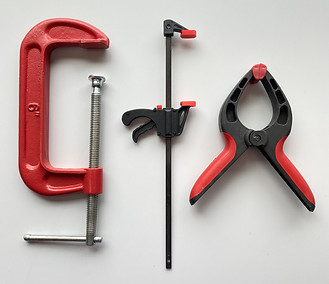If you didn't bring the knowledge from GCSE you will find information about each tool below. Experience of using many pieces of the equipment will be planned into your experience of D&T at NCB.
See section 7 for further info on manufacturing processes and techniques
A - Steel Rule - for measuring in cm/mm/inches
B - Vernier Calliper - for taking internal and external measurements to a tolerance of +/-0.02mm
C - Micrometer - for measuring the diameter of materials, usually to a tolerance of +/- 0.005mm
D - Tape Measure - for measuring in cm/mm/inches
E - Sliding Bevel - For marking out angles
F - General Square - marking 90 degrees across the face of material
G - Engineers Square - an accurate instrument for marking 90 degrees across a material face.
used with metal
H - Spirit Level - for checking the level of something. adjust until the bubble is between the lines.
A - Panel Saw - for larger, straight cuts in timber
B - Tenon Saw - for straight cuts in timber
C - Hack Saw - for cutting larger sections of metal
D - Junior Hack Saw - for cutting small sections of metal
E - Coping Saw - for cutting curves in timber and polymer
A - Rasp (half round) - for removing large amounts of material
B - Bastard File (flat) - For removing more material, quickly
C - 1st cut hand file (flat) - finer than a bastard file
D - 2nd Cut hand file - finer than a 1st cut file (there is also a 3rd cut/ smooth file available
E - Square file - shaped as a square
F - Round file - rounded shape for filing internal circles
Other shapes available - 3 square (triangular), half round for internal curves and needle files
A - Hand power drill (18v) - used in conjunction with drill bits and screwdriver bits to create holes and insert screws into material.
B - Countersink bit - used to create an angled recess for a screw head to sit in.
C - Hole Saw - used to 'cut' larger holes in material
D - Twist drill bit - a 'general' drill bit used to create holes in material
E - Flat bit - used to create larger holes in material.
Other drill bits are available: Forstner bit, fly cutter, auger bit
A - Socket - for removing/ tightening bolts/ nuts
B - Pliers - For gripping turning various fixings
C - Cross head screwdriver - for screwing/ removing cross headed screws
D - Flat head screwdriver - for screwing/ removing slotted screws
E - Adjustable spanner - used for tightening/ loosening Nuts and bolts. It can be adjusted to various sizes
F - Spanner - used for tightening/ loosening Nuts and bolts.
G - Allen Key - used for tightening/ loosening hex head fixings

D
D Not to scale
A - G- Clamp
B - Quick grip/ trigger clamp
C - Spring clamp
D - Sash Clamp
Other clamps are available
A - Die in holder - the die is used to tread the external surface of a metal rod/ tube
B - Tap in Holder - the tap is used to thread the internal circumference of a hole/ tube
C - Tap(as above)
D - Die (as above)
E - Drill bit - used to create an appropriate sized hole for the tap to create a thread in - a 6mm tap will need a 5.5mm hole for example
A - Rivet Gun - used for applying rivets when joining sheet/ sectional metal
B - Tin Snips - used for cutting sheet metal
C - Punch - used for creating a mark in metal for drill bit location
D - Scribe - used to mark out lines/ shapes on metal surface (used with marking blue or a marker to help highlight the mark)






A - Hand power drill (18v) - used in conjunction with drill bits and screwdriver bits to create holes and insert screws into material.
B - Angle grinder - metal fabrication including cutting, grinding, deburring, finishing and polishing.
C - Biscuit cutter - used for creating biscuit joints
D - Jig saw - Primarily used for cutting curves in wood
E - Circular saw - used for cutting straight lines in wood
F - Hand router - used for profilling edges of material (round/ chamfer).
D
A
b
c
e
f
A - metal lathe
B - Band saw
C - Milling machine
D - Table saw
E - Scroll saw
F - Pillar drill
G - Laser cutter
H - 3D printer
I - Vacuum former
J - Injection moulder
K - Line bender/ Strip heater
L - Metal chop saw
M - Disc sander
N - Metal band saw
O - Mig welder
p - Planer/ thicknesser
Q - Hot wire cutter
R - Soldering Iron
S - Hot glue gun
T - Mitre saw
Examples elsewhere

A

B

C

D

E
F


G

H

I

J

M

N
O

Q

R

K

L

P

S

t







